Atomic Habits by James Clear — Book Summary and Notes
No matter your goals, Atomic Habits offers a proven framework for improving 1% every day. Atomic Habits reshapes the way you think about progress and techniques you need to transform your habits.
James Clear
James Clear is an author and a speaker focused on habits, decision making, and lifelong improvement. Here, he draws on ideas from biology, psychology, and neuroscience to guide making good habits inevitable and bad habits impossible.
"If you're having trouble changing your habits, the problem isn't you. The problem is your system." — James Clear
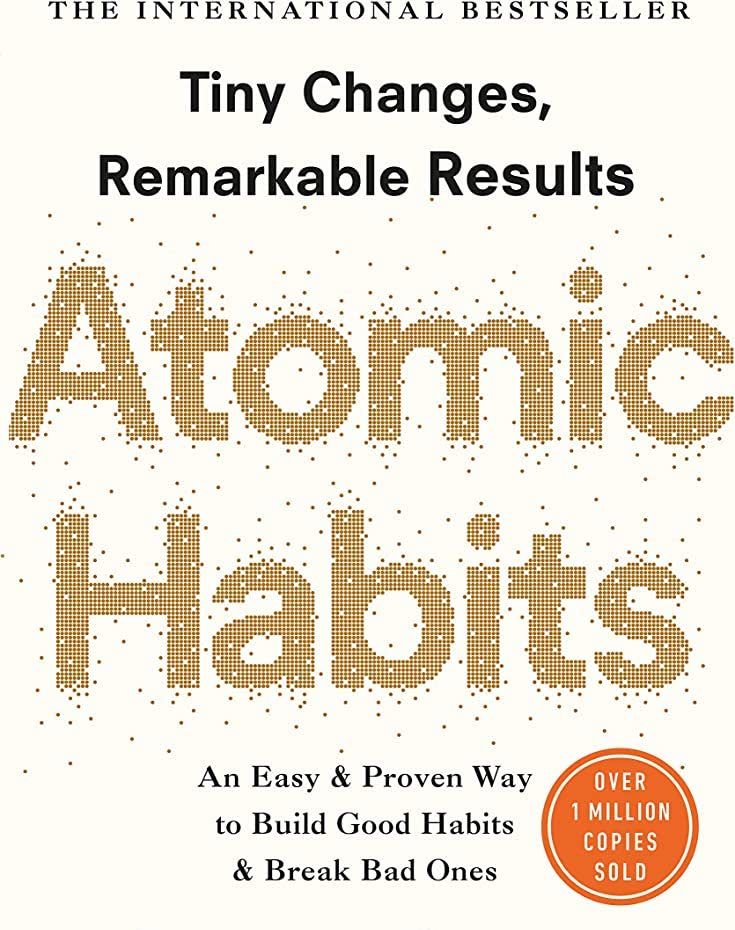
Atomic Habits
By James Clear
What are Habits?
Habits are mental shortcuts learned from experience. Your brain is always working to preserve your conscious attention for whatever task is most essential. Whenever possible, the conscious mind likes to pawn off tasks to the subconscious mind to do automatically. Habits reduce cognitive load and free up mental capacity so that you can allocate your attention to other tasks.
The Compounding Effect of Atomic Habits
It's easy to become frustrated if you look at the immediate results of a new habit as a measure of success. Too often, we convince ourselves that massive success requires massive actions. We overlook the difference a tiny improvement can make over time. If you can accept that time is required for any small change to reach an effective point, you will see that Habits are the compound interest of self-improvement.
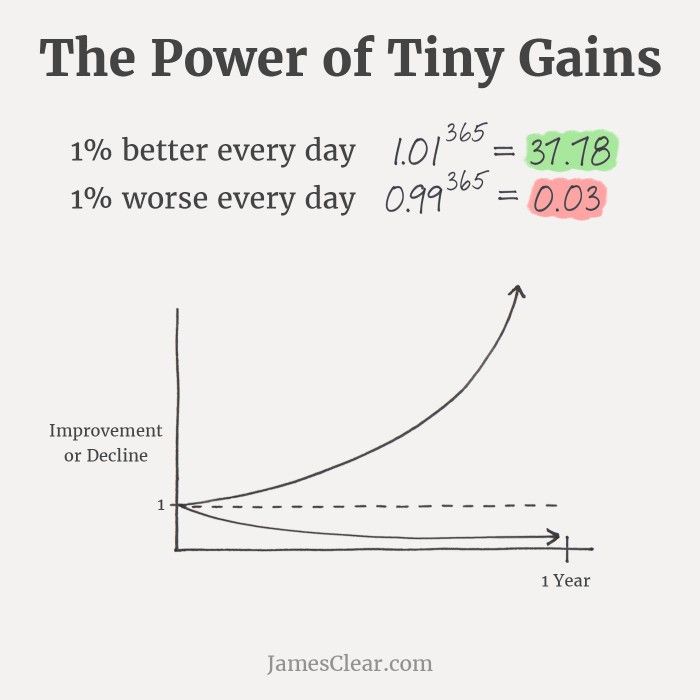
"Time magnifies the margin between success and failure. Good habits make time your ally. Bad habits make time your enemy."
Positive Compounding
- Productivity Compounds
Automatic habits free up your mental capacity to consider new tasks and behaviors. - Knowledge Compounds
Decide to learn one new thing each day, and you will create a wealth of knowledge over time - Relationship Compounds
Get to know one new person each week, and you will slowly build a network of new connections.
Negative Compounding
- Stress Compounds
Remain in a continuous state of stress, and it will have a detrimental impact on your overall health - Negative Thoughts Compound
Frequent thoughts about your lack of worth can build to the point of self-recrimination
Reality of Progress
Breakthrough moments are often the result of many previous actions, which build up the potential to unleash a major change. When you finally have a breakthrough moment, people will call it an overnight success. The outside world only sees the most dramatic event rather than all that preceded it. However, breakthroughs are only possible if you make it through the Valley of Disappointment and push through the Plateau of Latent Potential.
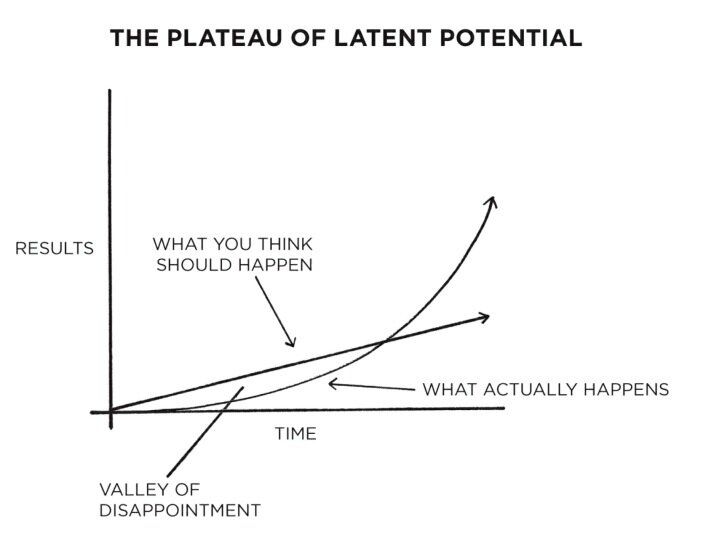
The Valley of Disappointment is the space between what you expect when you change a habit and what actually happens. If you find yourself struggling to build a good habit or break a bad one, it is not because you have lost your ability to improve. It is often because you have not yet crossed the Plateau of Latent Potential. All the benefits of your hard work are being stored and waiting for you on the other side.
Goals v.s. Systems
Problem #1: Winners and Losers have the same goals
- Goal setting suffers from a serious case of survivorship bias. We concentrate on the people who end up winning—the survivors—and mistakenly assume that ambitious goals led to their success while overlooking the people who had the same objective but didn't succeed.
Problem #2: Achieving a goal is only a momentary change
- Achieving a goal only changes your life for the moment. We think we need to change our results, but the results are not the problem. What we really need to change are the systems that cause those results. Fix the inputs, and the outputs will fix themselves.
Problem #3: Goals restrict your happiness
- The implicit assumption behind any goal is this: "Once I reach my goal, then I'll be happy." The problem with a goals-first mentality is that you're continually putting happiness off until the next milestone. Goals create an "either-or" conflict: either you achieve your goal and are successful, or you fail, and you are disappointed.
Three Layers of Behavioral Change
"Changing our habits is challenging for two reasons: (1) we try to change the wrong thing and (2) we try to change our habits in the wrong way."
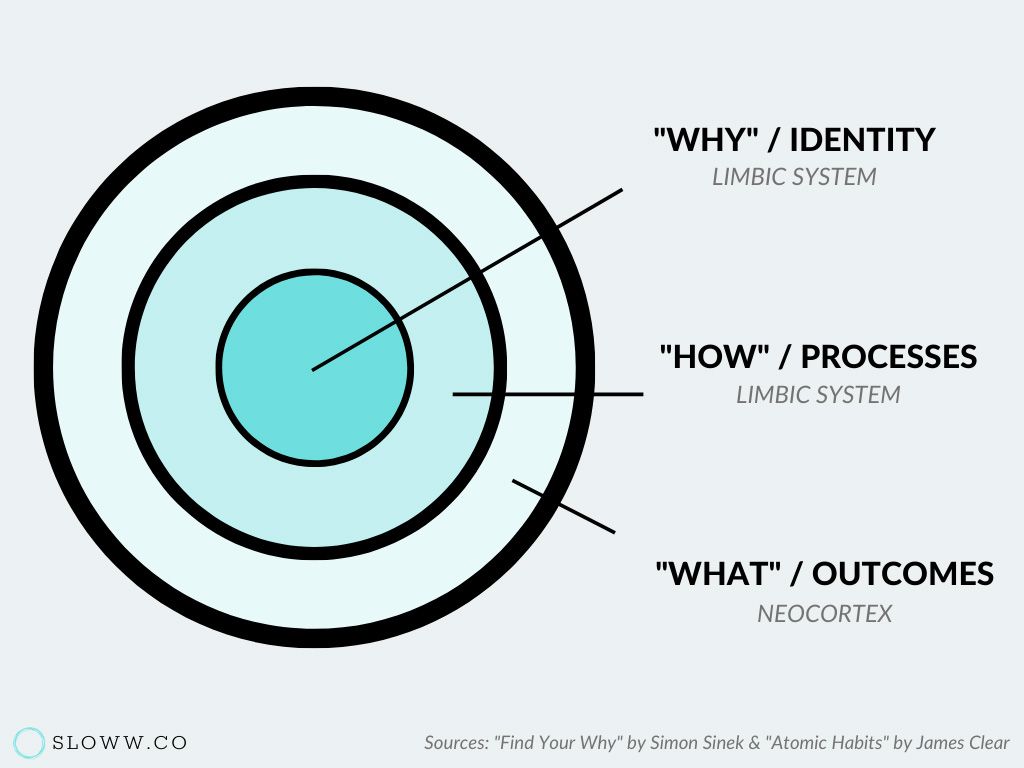
- The Outer Layer is changing your outcomes. This level is concerned with changing results.
- The Middle Layer is changing your process. The behaviors involved in your system become the focus of your change.
- The Inner Layer is changing your identity. This layer encompasses your opinions, beliefs, and assumptions about yourself and the world.
Outcome-Based & Identity-Based Habits
- With outcome-based habits, the focus is on what you want to achieve.
- With identity-based habits, the focus is on who you wish to become.
- The effect of one-off experiences tends to fade away while habits get reinforced with time, which means habits contribute most of the evidence that shapes your identity.
- The more deeply a thought or action is tied to your identity, the more difficult it is to change it.
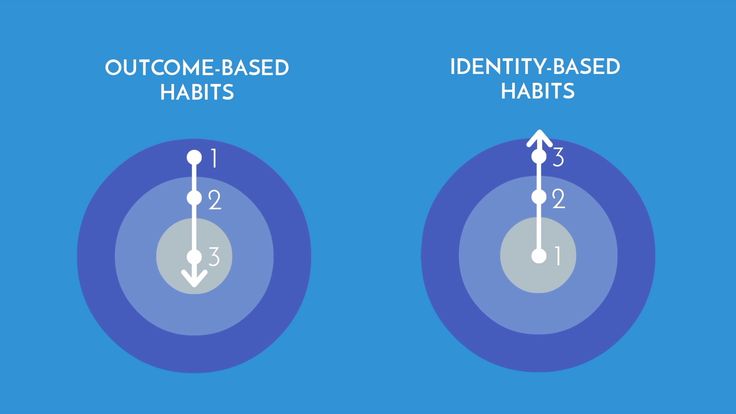
Each habit not only gets results but also teaches you something far more important: to trust yourself. You start to believe you can actually accomplish these things. When the votes mount up, and the evidence begins to change, the story you tell yourself begins to change as well.
- Decide the type of person you want to be
- Prove it to yourself with small wins
How to Build Better Habits
"Behaviours followed by satisfying consequences tend to be repeated and those that produce unpleasant consequences are less likely to be repeated" — Thorndike
The process of habit building can be divided into four steps (an endless feedback loop)
- Cue: triggers your brain to initiate behavior that predicts a reward. Your mind is continuously analyzing your internal and external environments for hints of where rewards are located.
- Craving: the motivational force behind every habit. What you crave is not the habit itself but the state change it delivers.
- Response: the actual habit you perform, which can take the form of a thought or an action. Whether a response occurs depends on how motivated you are and how much friction is associated with the behavior.
- Reward: the end goal of every habit. The cue is about noticing the reward. The craving is about wanting the reward. The response is about obtaining the reward. We chase rewards because they serve two purposes: (1) they satisfy us, and (2) they teach us.
These stages can be broken down into the problem phase and solution phase when looking at any habit. The cue and craving create the problem, and the response and reward provide the solution.
- Problem Phase—Cue: You walk past a coffee shop on the way to work and smell roasted coffee. Craving: coffee gives you energy, and you want to feel energized.
- Solution Phase—Response: You buy a cup of coffee. Reward: By the time you reach work, you are raring to go. Habit: You buy a cup of coffee each day you commute to work.
If anyone of the stages fails, you will not form the habit.
- If you remove the cue, your brain is not activated.
- If you remove the craving, you do not need to act.
- If the response is too hard, you won't be able to do it
- If the reward is not satisfying, you have no reason to repeat it
The Four Laws of Habit Formation
- Cue—Make it obvious
- Craving—Make it attractive
- Response—Make it easy
- Reward—Make it satisfying
The inverse of these laws helps break your bad habits.
- Cue—Make it invisible
- Craving—Make it unattractive
- Response—Make it difficult
- Reward—Make it unsatisfying
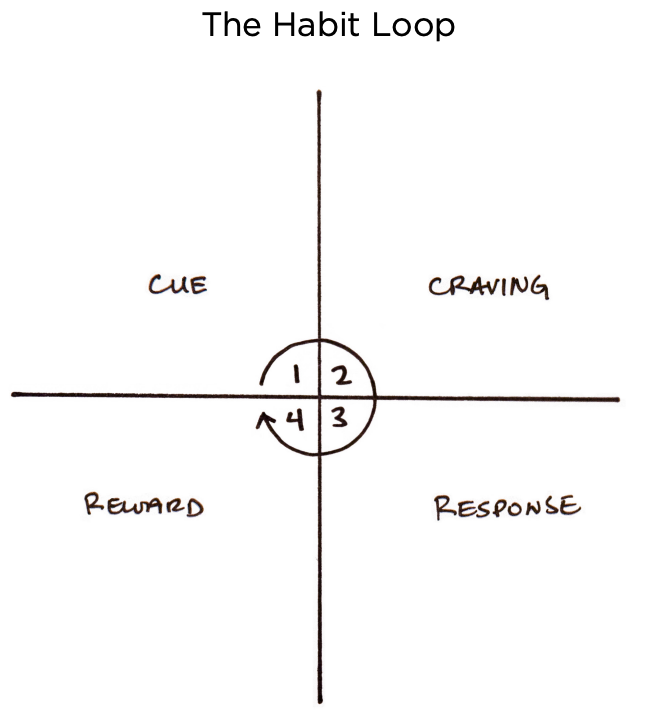
Law #1 - Make it Obvious
The Habit Scorecard
Make a list of your daily habits helps bring your habits out of the unconscious to the surface.
Create a list of all the actions you make daily, so your habits are displayed all together. One way to determine which habits service you are to think of their net outcomes.
- If a habit will compound into behavior that fits your identity, it is effective.
- If a habit will compound into behavior that betrays your identity, it is ineffective.
- Place a "+" next to effective habits, a "-" next to ineffective habits, and a "=" next to neutral habits.
Forming New Habits
Using the habit scorecard, two effective methods can help you implement better habits into your life: Implementation Intention and Habit stacking.
Implementation Intention
Make an advanced plan for what you will do and when you will do it. The two most common cues are time and place.
The Formula: "When X Occurs, I will do Y."
- Be as specific as possible: Specificity removes the need for motivation.
- When you make time and place obvious, you train your brain to create an association with those cues.
Habit Stacking
Habit stacking exploits the phenomenon of accumulating behaviors, known as the Diderot Effect, to help create new habits. This effect describes the tendency for one major purchase to lead to a spiral consumption of additional purchases. Similarly, one action triggers another. Understanding this fact helps you use current habits to build new ones. The reward of the current habits becomes the cue for the next behavior.
The Formula: "After I do X, I will do Y."
Habits and Your Environment
People often choose products not because of what they are but because of where they are. Environment shapes behavior, which makes habits more dependent on context than we know.
- For example, at the grocery store, eye-level items tend to be purchased more than those near the floor. For this reason, you'll find expensive brand names featured in easy-to-reach locations because they drive the most profit.
These types of choices are not due to thought or motivation but because they are more convenient.
In your life, your habits center around what you see and what appears convenient. Your relation with the object—the context by which you understand the object—is the trigger.
To form and maintain good habits, ensure that the right visual cues exist in your environment. To create better habits, ensure that each object or space is only associated with one context.
The more you can create a stable and predictable environment with clear contextual cues, the more stable and predictable.
Remove the Cue to Break Habits
If you want to quit a bad habit, you must first remove the cues.
Bad habits are autocatalytic: the process feeds itself. They foster the feelings they try to numb.
"Cue-induced wanting" is an external trigger that causes a compulsive craving to repeat a bad habit. Once you notice something, you begin to want it.
Despite what you've been conditioned to believe, discipline and self-control are not the most important aspects of habit formation. You can break bad habits, but you won't forget them or their cues.
Willpower is a temporary solution; changing your environment is a long-term solution. When you create a predictable and stable environment, the need for discipline or willpower is reduced.
Law #2 - Make it Attractive
Cravings are the brain's methods of signifying that something is missing inside. Your habits are the time-tested strategies used to create shifts in your physical or emotional state to fill the void.
Look at nearly any habit-forming product, and you'll see that it does not create a new motivation but rather latches onto the underlying motives of human nature.
- Find love and reproduce = using Tinder.
- Connect and bond with others = browsing Facebook
- Win social acceptance and approval = posting on Instagram
- Reduce uncertainty = searching on Google
- Achieve status and prestige = playing video games
Scientists can track the precise moment a craving occurs by measuring a neurotransmitter called dopamine. All habits create a dopamine spike in the brain, and it's released in two ways: the anticipation of pleasure and the experience of pleasure.
The anticipation of pleasure—the process of wanting—is triggered when the brain notices a cue and perceives a reward.
The experience of pleasure—the act of liking—is initiated when something happens that is pleasurable.
The difference between wanting and liking is that wanting is tens times stronger.
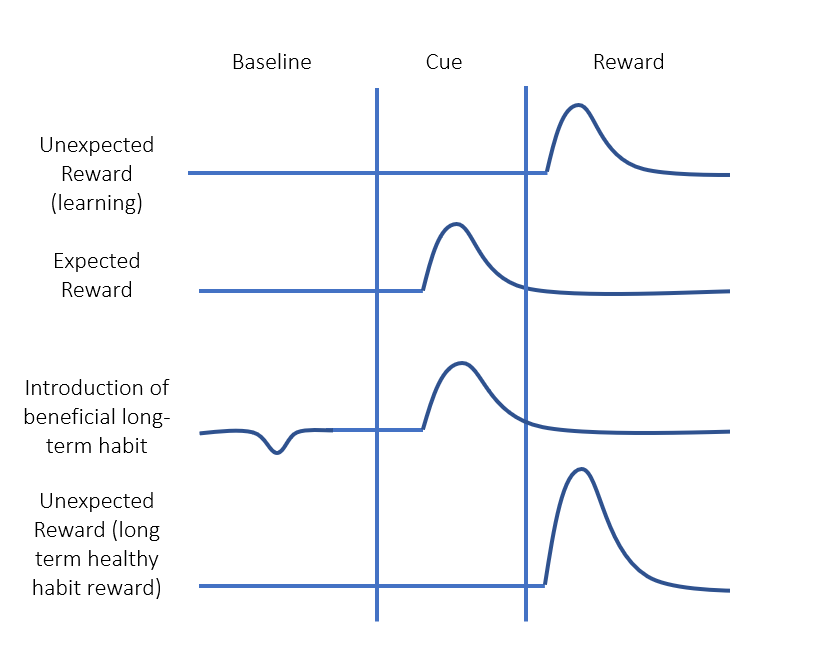
Social Relevance
Your underlying motivation to belong affects your behaviors. You want to feel connected to others and be a part of something greater than yourself. That's why your earliest habits are formed by imitating how parents and friends behave. When certain behaviors help you fit in and belong, they are more attractive.
We imitate the habits of three groups in particular: (1) The close, (2) The many, (3) The powerful.
The Close
How your loved ones respond to a cue acts as subconscious peer pressure. You imitate their behavior so that you will be seen as one of them.
Surrounding yourself with positive influences helps surround you with good behaviors. When you see others behave in a way that aligns with the habits you want to create, forming those habits becomes easier. To use your social environment to its full potential, seek out specific social groups where your desired behaviors are the norm.
The Many
Whenever we are unsure how to act, we look to the group to guide our behavior. We are constantly scanning our environment and wondering, "What is everyone else doing?" You want to imitate the best behaviors, so you seek out the most popular options chosen by the public.
Your instinct is to get along with others. Most days, we'd rather be wrong with the crowd than be right by ourselves. But when the group's actions cause you to disregard your own feelings or behaviors that fit your personal identity, this influence becomes negative. Following a different path than the group is unattractive, but you can learn to seek out groups that support your identity with effort.
The Powerful
Your underlying motivation to gain status and admiration for who you cause you to imitate the behaviors of successful people. You imitate the behavior of successful people and become motivated to act in a way that generates the praise and respect you perceive them to have.
How to Make the Right Behaviors Attractive
Temptation Bundling
Temptation bundling is one way to apply a psychology theory known as Premack's Principle to reduce the friction in building new habits. The principle states that "more probable behavior will reinforce less probable behaviors." In other words, you'll become conditioned to do a task you enjoy less if it means you get to something else you really want to do along the way.
The Habit Stacking + Temptation Bundling Formula:
1. After [CURRENT HABIT], I will [HABIT I NEED]
2. After [HABIT I NEED], I will [HABIT I WANT].
Signal Switching
When you experience positive feelings about someone or something, it becomes more attractive. Similarly, you can make hard habits more attractive if you learn to associate them with a positive experience. Sometimes, all you need is a slight shift in mindset.
Think about your "to-do" list. These are things you feel you have to do. Now, imagine changing just one word: You don't "have" to do them. You "get" to do them.
- "I have to cook dinner for my family" becomes "I get to cook dinner for my family". You begin to recognize your fortune in having the freedom to be there with your family.
- "I have to wake up early for school" becomes "I get to wake up early for school" You begin to recognize your privilege in having convenient access to education.
Law #3 - Make it Easy
"The best is the enemy of the good." — James Clear
Making habits easy means creating pathways for behavior that are low in friction and high in commitment.
Motion v.s. Action
Preparing for change is an effective way to trick yourself into thinking you're forming better habits when all you're really is procrastinating. When you get trapped in the process of looking for the best solution, you never get around to take action.
Motion is what happens when you take time to plan, research, and design the change process. When working for you, motions help you gather your thoughts and determine your first steps to change your system. When working against, motion gives you the illusion of making progress. You feel productive, but motion doesn't lead to the results you want. Action does. Only by consistency and repetition will you be able to create behavior that becomes easy and sustainable.
Repetition is Key
Neuroscientists use the term "long-term potentiation" to describe the process of automating habits. In the brain, neural pathways are created when a new behavior begins. The more the brain recognizes a pattern of behavior, the deeper the pathways become.
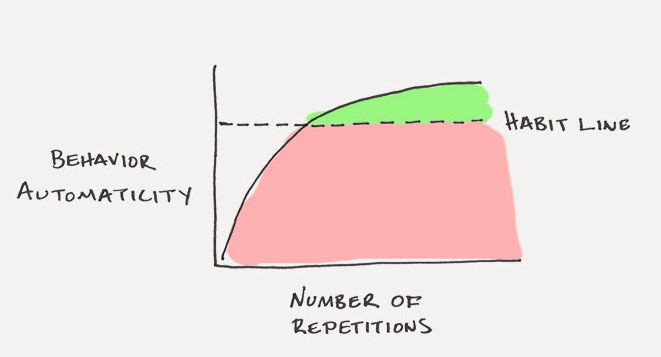
Habit formation aims to strengthen the connections in your brain to reach a state of automaticity, or the ability to act without thinking about each step. Because every habit must go through this process, the frequency with which you perform a habit is more important than the length of time you perform it.
The Path of Least Resistance
There will always be days when you're not motivated to act, but you still need to get your behavior repetitions in. Only by reducing the effort required to act will you ensure you will still follow through.
- Reduce the friction associated with good behaviors. When friction is low, habits are easy.
- Increased the friction associated with bad behaviors. When friction is high, habits are difficult.
Prime the Environment for Future Use
Resetting the environment means cleaning up after your last action in a way that prepares you to fur future actions. When things are in the right place, not only is finding them easier, but it also saves time and effort, which can be transferred to other activities.
- Want to read more? Put a book next to your bed before you leave the house in the morning.
- Want to exercise more? Set out your workout clothes, shoes, and water bottle.
The Two-Minute Rule
"When you start a new habit, it should take less than two minutes to do."
One of the reasons new habits fail is that you begin too big. If you break the system of a new habit down into smaller pieces, you will have more success in maintaining that habit.
- "I will read before bed each night" becomes "Read one page."
- "I will write a book" becomes "Write 50 words a day."
A new habit should not feel like a challenge. The actions that follow can be challenging, but once momentum is built with the gateway habit, it will naturally lead you to a more productive path.
Commitment Devices
A commitment device is a choice you make in the present that controls your actions in the future. It is a way to lock in future behavior, bind you to good habits, and restrict you from bad ones. They enable you to take advantage of good intentions before you can fall victim to temptation.
- Set up a timer that shuts down electronics, so staying up late using them is impossible.
- Instead of buying bulk-quantity snacks, buy individually packed servings.
"The key of a commitment device is to make doing the 'good habit' easier than it is to not do it."
Law #4 - Make it Satisfying
"What is rewarded is repeated. What is punished is avoided. — Cardinal Rule of Behavior
The first three laws of behavior change—*make it obvious, make it attractive, and make it easy—*increase the odds of performing a behavior this time. The fourth law of behavior change—*make it satisfying—*increases the likelihood of repeating a behavior next time.
Immediate v.s. Delayed rewards
Modern society is structured as a "delayed-return environment". However, the human brain did not evolve for life in this environment, where survival was a daily concern. It was not until recent centuries that our lives became filled with delayed-return choices: career planning, retirement planning, etc...
- With bad habits, the present outcome is positive, but the cumulative outcome is negative.
- Likewise, the present outcome is less gratifying with good behaviors, but the eventual outcome is positive.
Reinforcements
Reinforcements help maintain continued behavior by allowing you to experience an alternative win after a certain action. As the small rewards help you maintain the desired habit, your habits will build your chosen identity.
- Each time you buy up buying an unnecessary item, you can transfer the money to a special account for something you want, like a vacation.
Habit Tracking
Habit tracking naturally builds a series of visual cues like the streak of X's on your calendar. In this way, it can behave as an additive effect of motivation. When you visually track progress, the success of your habit becomes tangible and reinforces the behavior. Each small win feeds your desire as it is satisfying to cross an item off your to-do list.
The Habit Stacking + Habit Tracking Formula:
1. After [CURRENT HABIT], I will [TRACK MY HABIT].
"Missing once is an accident. Missing twice is the start of a new habit."
Anyone can have a 'bad day', but when successful people fail, they rebound quickly. The breaking of a habit doesn't matter if the reclaiming of it is fast. Sometimes, you don't realize how valuable it is to show up on your bad days.
- In investments, avoiding a 33% loss is as valuable as achieving a 50% gain.
No matter how you measure your improvement, habit tracking offers a simple way to make your habits more satisfying. Each measurement contributes tiny fractions of evidence that you're moving in the right correct and a brief moment of immediate pleasure for a job well done.
Creating a Habit Contract
If a failure is painful, it gets fixed. If a failure is relatively painless, it gets ignored. The more immediate and more costly a mistake is, the faster you will learn from it.
If you want to prevent bad habits and eliminate unhealthy behaviors, adding an instant cost to the action is a great way to reduce their odds.
If you're going to rely on punishment to change behavior, then the strength of the punishment must match the relative strength of the behavior it is trying to correct.
- To be productive, the cost of procrastination must be greater than the cost of action.
Thomas Frank, a Youtuber and entrepreneur well known for his productivity and personal development content wakes up at 5:55 each morning. And if he doesn't, he as a tweet automatically scheduled that says, "It's 6:10, and I'm not up because I'm lazy! Reply to this for $5 via PayPal (limit 5), assuming my alarm functioned correctly."
Your Genes and Your Habits
Habits are easier to perform and more satisfying to stick with when they align with your natural inclinations and abilities. Embracing this strategy requires the acceptance of the simple truth that people are born with different abilities. Genes do not determine your destiny, but they do determine which opportunities will benefit you the most.
Our environment determines the suitability of our genes and the utility of our natural talents. When our environment changes, so do the qualities that determine success.
The Big 5 Personality Traits
There are 5 personality traits, each with a spectrum of behavior that highlights who you are. All five have biological underpinnings and typically remain unchanged throughout your life.
- Openness to experience—from curious and daring to cautious and unvarying
- Conscientiousness—from organized and methodical to spontaneous and relaxed
- Extroversion—from sociable and gregarious to reclusive and reticent
- Agreeableness—from affable and caring to difficult and withdrawn
- Neuroticism—from fretful and sensitive to assured and resilient
Understanding your personality doesn't dictate what behaviors you're capable of performing. However, Personality does suggest which behaviors you will most likely gravitate towards and be successful with.
- A less agreeable person will struggle to build a habit of forming one social connection a week.
- An extrovert will have a harder time staying off of social media than an introvert.
What Behaviors Are Right for You?
The process of trial and error includes periods of exploration and exploitation.
During exploration, you should remain open to the various paths that lead to your desired identity. Exploitations mean repeating the successful behavior or activity to gain more successful results.
A good balance during trial and error is to exploit successful behaviors 80% to 90% of the time and explore other options 10% to 20% of the time.
- What is fun for me but hard for others?
Activities you enjoy that are not universally considered enjoyable point to behaviors that align with your genetic predispositions.
2. What makes time fly for me?
Being in the zone, or the "flow state", only occurs if you're successful and engaged in what you're doing. Any activity that creates this sensation is in line with your genetic composition.
3. Which behaviors or activities provide returns for me that are better than the returns of others?
Compare yourself with others and focus on behaviors that are more successful for you than others.
4. What behaviors or activities come naturally to me?
When do you come alive or feel the most like your authentic self?
In A Nutshell
It's hard to fathom that one small change in behavior can truly transform your entire life. However, Atomic Habits describe that small adjustments in the right behaviors systems can compound long-term success. Habits require constant reflection and refinement so you can adjust behaviors to suit your systems and goals as you grow and transform. The main ingredient to lasting success is persistence in looking for ways to keep adding small improvements to your behaviors. If you keep moving forward, you'll eventually reach the life you want to live.

